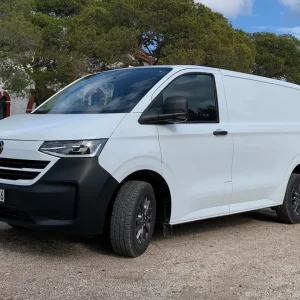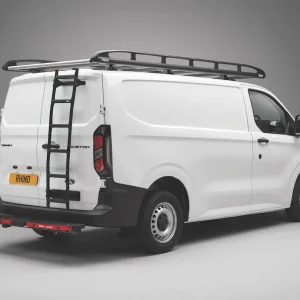Buying a tipper, say, or a dropside used to be an agonisingly slow business. You would go to a dealer, order a chassis cab and when it eventually turned up at the dealership the dealer would dispatch it to a local firm to be bodied. The whole process took weeks and the body that was fitted wasn't always up to scratch. How times have changed.
Nowadays manufacturers regularly deliver chassis to dealerships ready-bodied and ready-to-go-to-work. That means far less waiting time for the customer.
Although an independent bodybuilder may still be involved, the chassis maker will have checked and double-checked to ensure that he is capable of doing a competent job.
Odds are that he will have to comply with a recognised quality control process such as BS EN ISO 9001 and carry substantial product liability insurance. Odds are too that he will have to sign a legally binding contract with the manufacturer and submit his premises and products to periodic inspection by an independent third party such as the Freight Transport Association.
Off-the-Shelf
Ready-to-go-to-work vehicles tend to fall into two categories. Category number one is occupied by the higher sales volume vehicles, with Lutons usually figuring in the line-up along with tippers and dropsides. Often to be found in the chassis builder's price list, as well as the manufacturer's, they're protected by the latter's warranty that embraces both the chassis and the body, and lasts for the same time and for the same mileage in each case.
Behind the scenes the bodybuilder will probably be warranting his own workmanship under an agreement with the chassis maker, but that's a matter for them. So far as the operator is concerned, it's one warranty and one port of call — the local dealer — if a claim has to be made.
He won't have to get embroiled in disputes over who is responsible for which bit of the vehicle. The dealer may also stock some of the faster-moving bodywork parts.
Specialised
Category number two embraces more specialised vehicles. They probably won't be price-listed and the operator may end up dealing directly with whoever has built the body if there's a problem with it. The manufacturer will have inspected their products, their production facilities and assessed the aftersales support they provide, however, to give the end-user some comfort that they know what they're doing.
The warranty they provide may or may not match the warranty that embraces the chassis.
Vauxhall
Vauxhall classes the former as core conversions and, not surprisingly, its core line-up includes tippers, Lutons and dropsides as well as minibuses. The latter it designates as recognised conversions.
Daf Trucks
In some cases chassis makers are designing, building and fitting the bodies themselves on their own assembly lines. That's certainly the case with Daf and its LF 7.5-tonner.
It's now producing the vehicle ready-bodied as either a box van or a curtainsider — both can be supplied with a Ratcliff Palfinger tail-lift as an extra-cost option — as well as as a bare chassis cab. We're paying a visit to the Daf facility in the near future and will report back.
Type Approval
One factor that's influencing Daf's thinking — and probably the thinking of others — is undoubtedly the planned application of European Whole Vehicle Type Approval to all aspects of commercial vehicles, including any bodies that may be fitted.
Its aim is to ensure that they are safe to use on the road without the need to test and inspect every single one that rolls off the production line. A prototype is tested instead and if it passes muster along with the production facilities, then it can be sold anywhere in Europe.
It's potentially bad news for small bodybuilders who will not have the resources to mount a testing programme. On the other hand it may prove to be rather good news for their larger rivals, who probably will.
Iveco
 Iveco has got a ready-to-go-to-work programme it markets under the DriveAway Options banner.
Iveco has got a ready-to-go-to-work programme it markets under the DriveAway Options banner.
“An operator can walk into any of our participating dealerships, order one of these vehicles and — subject to availability — could be driving it away within hours,” says a spokesman. “It's a service that's especially useful to the customer if he has just won a new contract and the work is due to start almost immediately because it means he won't have to hire in a vehicle while one is being built to order for him.”
Factory-Fitted
Toyota fits tipper and dropside bodies to Dyna on the assembly line and Isuzu Truck does the same so far as its Grafter 3.5-tonner is concerned. Renault fits dropsides and a box body to Master chassis at the factory, but employs UK bodybuilders Trucksmith and VFS to fit Luton and tipper bodies respectively. The Trucksmith Luton is mounted on a chassis platform.
Renault's sister company Nissan employs a similar approach, with dropside bodies fitted to Cabstar on the assembly line, but tippers are UK-sourced.
Volkswagen
 A few months ago Volkswagen decided to launch a range of ready-to-go-to-work chassis cab conversions based on the Crafter CR35 3.5-tonner and sold under the 'Engineered to Go' banner.
A few months ago Volkswagen decided to launch a range of ready-to-go-to-work chassis cab conversions based on the Crafter CR35 3.5-tonner and sold under the 'Engineered to Go' banner.
The line-up consists of a dropside and a tipper sourced from Ingimex and a Luton courtesy of Boalloy. Each vehicle is protected by a three-year warranty that embraces both the chassis and the body.
Up for grabs on medium- and long-wheelbase chassis and as a long-wheelbase double cab, the dropside body comes with a one-piece birch plywood floor 15mm-thick that's coated with non-slip phenolic resin. Double-skinned anodised aluminium panels are used to construct the sides and the tailgate.
Maximum payload capacity varies from roughly 1,100kg to around 1,300kg depending on the chassis selected and its precise specifications. Load bed length runs from 3,482mm to 4,300mm, while the width and dropside/tailgate depth are 2,026mm and 408mm respectively in all cases.
Popular with other manufacturers as well as with VW, Ingimex's Titan tipper body boasts an all-steel floor. As with the dropside, the sides are made from double-skinned anodised aluminium, but the tailgate is made from polished stainless steel.
You can order the tipper body on either a medium-wheelbase single cab chassis or on a long-wheelbase double cab chassis.
Top load length is the same in each case, at 3,125mm. Width is the same too, at 2,026mm, while sidewall and tailgate height are 408mm and 500mm respectively. Payload capability varies from approaching 1,000kg to roughly 1,200kg.
Constructed using a one-piece grp roof plus self-coloured grp panels and mouldings, like the dropside the Luton comes with a 15mm phenolic-coated birch-ply floor. A narrow-slatted rear roller shutter door is a standard feature.
Available on either a medium- or a long-wheelbase chassis, the Luton offers a load length of either 3,280mm or 4,030mm and a load height of 2,315mm. Load width is 1,950mm while approximate load cube is either 14.8m3 or 18.1m3. Payload capacity is in the region of 1,000kg.
Almost 100 conversions have been sold so far. The dropside is selling slightly better than the Luton, which is selling a little better than the tipper.
In addition to the foregoing VW has accredited some 20 converters whom it believes have the ability to produce specialist non-standard conversions.
Including firms well-known for their expertise in turning out fridge vans and minibuses, this second scheme is being promoted under the 'Engineered for You' banner. Conversions based on Caddy and Transporter as well as on Crafter are included.
Mercedes-Benz
Like its close relative the Crafter, Merc's Sprinter also makes a good base for conversions. Line-fitted at the factory packages encompass fridge vans and an aluminium dropside body. Local conversions include an alloy Luton and a tipper.
Not only does Mercedes cover the bodies for the same three-year period as the base vehicle, it also supports them for a further 10 years.
Citroën
Not to be outdone, Citroën has for some years offered a huge range of ready-to-go-to-work conversions, and has recently extended and updated its Ready to Run programme.
As well as tippers, dropsides and Lutons, the line-up includes glass carriers courtesy of Supertrucks and even car transporters produced by KFS.
Nor does the programme restrict itself to bodywork. It also features a Berlingo converted to run on either petrol or liquefied petroleum gas by Nicholson McLaren Engines.
Ford
Not wanting to be left out of the equation, Ford markets a line-up of tippers, dropsides and box vans under the One-Stop brand.
It includes a Transit 350M 3.5 tonne tipper with a steel floor and alloy sides. A shorter version of the same body can be specified on the 350L double cab.
LDV
A few months ago a revived LDV used the Commercial Vehicle Show to introduce its long-awaited Maxus chassis cab, bodied as both a tipper and a dropside, and it plans to offer Luton and box bodies by the end of the year
Piaggio
One of the widest programmes is offered by Piaggio with the Porter. It can arrange to have it bodied as anything from a fire engine to a refuse collection vehicle — with or without a wheelie bin lift — as well as as a pick-up or tipper.
Boom Time
Demand for tippers and dropsides — the sort of vehicles used by builders — looks like booming over the next few years with housing now right at the top of the government's agenda.
Something else likely to stimulate orders for these and other light commercials is the aftermath of the disastrous floods in Sheffield and Hull. The receding waters have devastated many houses — a tragedy for the householders involved — and a whole army of tradesmen will be needed to put the damage right; and tradesmen need vans.
VERDICT
If there's any drawback to the oven-ready chicken approach to bodied chassis, it's that there is only limited scope for customisation. If you want the sides slightly higher or the cargo bed slightly longer, then you may be disappointed.
Yet that begs the question as to why you want those minor modifications to begin with. Is there a genuine need for them or is it simply because 'we've always done it that way'?
If the latter is the case, then you may find that a standard body will meet your requirements more than adequately; and at a more competitive price than a one-off.
Finally, make sure you read the small print carefully so that you are aware of the exact terms of the body warranty. It's better to find out sooner rather than later if a problem should arise.






